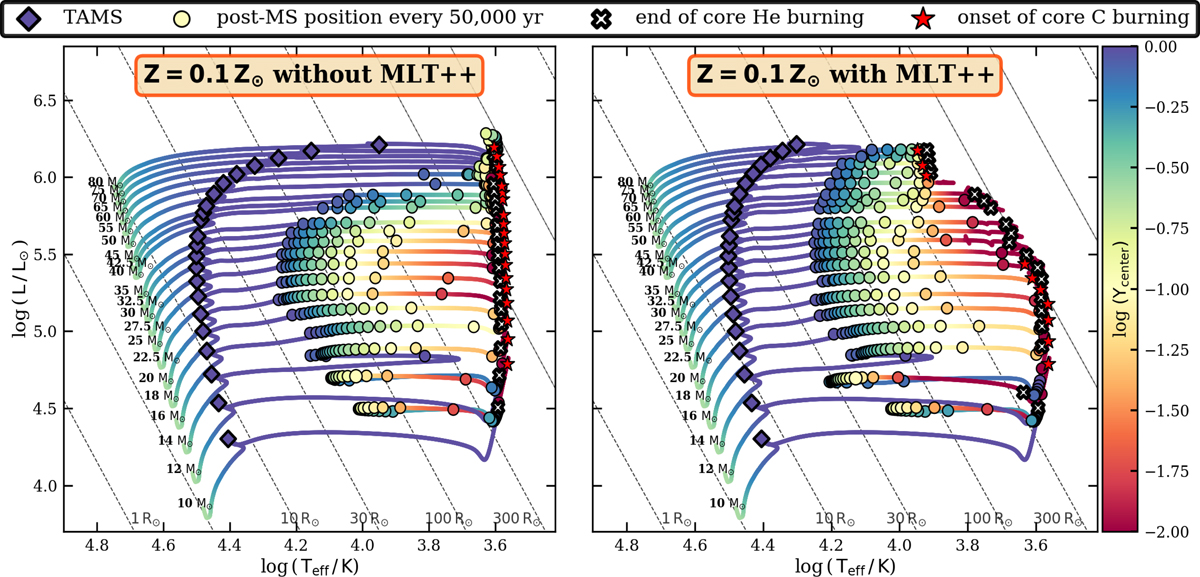Fig. 5.

Effect of MLT++ on the evolution of massive stars in the HR diagram. The various scatter points have the same meaning and color scale as in Figs. 1 and C.1. In the most massive stars, in which the density in regions with Lrad/LEdd > 1 is so small that it limits the efficiency of convection, a temperature gradient becomes superadiabatic and a density inversion develops in order to stabilize the structure (see Appendix A). The MLT++ approach gradually smooths the temperature gradient and reduces superadiabaticy, also removing density inversions and the Lrad/LEdd excess in the most massive stars. A direct consequence of the MLT++ treatment of convection is that the effective temperature becomes higher, as illustrated by the above figure.
Current usage metrics show cumulative count of Article Views (full-text article views including HTML views, PDF and ePub downloads, according to the available data) and Abstracts Views on Vision4Press platform.
Data correspond to usage on the plateform after 2015. The current usage metrics is available 48-96 hours after online publication and is updated daily on week days.
Initial download of the metrics may take a while.


